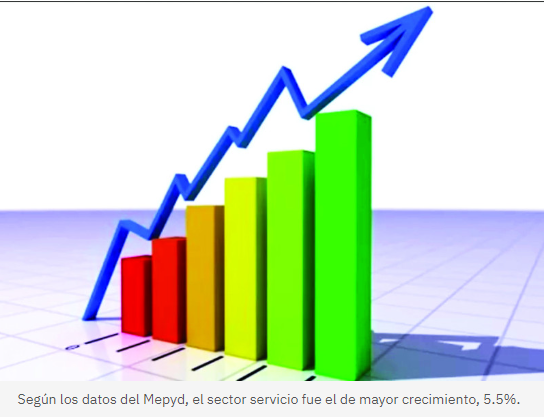During a meeting with AIRD executives, Central Bank governor said the country is attractive because of its resilience and the certainty of its economic performance.
The governor of the Central Bank of the Dominican Republic (BCRD), Héctor Valdez Albizu, reported that there is a growing interest on the part of corporations and international investors in the Dominican Republic, “attracted by our resilience, certainty about the performance of the economy and the prospects of returns on their investments.”
Valdez Albizu spoke at a meeting with the Association of Industries of the Dominican Republic (AIRD), where its chairman, Julio Virgilio Brache, praised the measures taken by the Central Bank since the outbreak of the pandemic to the present, ‘which thankfully have led to an enviable stable economic climate in the region’.
Valdez Albizu highlighted the stability of the exchange rate, considering that the accumulated appreciation as of December 30, 2022, was 2.0%. In addition, international reserves reached the historical figure of US $ 14,440.6 million at the end of last year, equivalent to 5.6 months of imports and 12.8 % of gross domestic product (GDP).
He expressed his optimism about the prospects of the Dominican economy in 2023, noting that ‘ in the context of a delicate international situation such as the current one, fresh from a global crisis caused by covid-19, and with adverse atmospheric phenomena that affected agriculture, the resulting 4.9% economic growth in 2022 can be considered a success’.
Furthermore, with respect to the BCRD’s forecasts for 2023, in accordance with the forecasts of international organizations such as the International Monetary Fund (IMF), the World Bank (WB) and the Economic Commission for Latin America and the Caribbean (ECLAC), the growth of the Dominican economy should reach a figure of around 4.5%.
He also referred to the Central Bank’s forecasts regarding inflation, which ‘we think will converge this year within the target range of 4+/-1%, as the monetary policy transmission mechanism continues to operate and the short-term factors affecting the volatile component of prices dissipate, mainly the effects of climatic phenomena and the fall in container and commodity prices’.
He stressed that the year-on-year consumer price index (CPI) stood at 7.83% at the end of 2022, 181 basis points less from a maximum of 9.64% in April of that year, the data of core inflation for price stability being especially relevant, which stood at 6.56% in December, a figure that distinguishes the Dominican Republic from other countries in the region.
He pointed out the importance of the monetary policy rate remaining at 8.50% annually for about three months, indicating a pause at a time when almost all central banks in Latin America have increased their rates, placing them significantly above pre-pandemic levels, as is the case of Argentina (75%), Brazil (13.75%), Colombia (12.75%) Uruguay (11.50%), Chile (11.25%), Mexico (10.50%), or Costa Rica (9%).
Source:
Hoy




